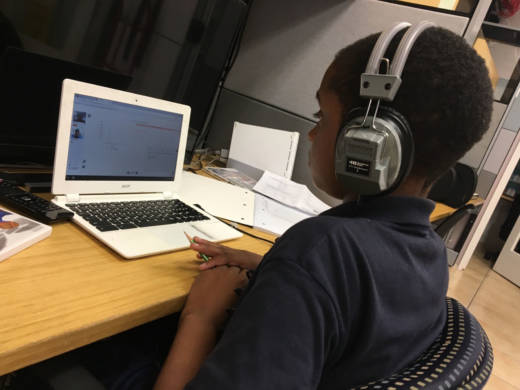In a briefing to board members, L.A. Unified chief financial officer Megan Reilly noted implementing the plan will take more time, more work and board approval.
Though Reilly offered few specifics of what this "realignment" would involve, she said district officials "have had discussions with the California Department of Education and they have given us explicit guidance on how to do this."
"So we feel comfortable," she added, "in our first step."
The activists who sought the state Department of Education's help are likely to be skeptical of L.A. Unified's solution. The Community Coalition of South L.A. brought the complaint in the first place because it felt the district was abusing the spirit, if not the letter, of the state's Local Control Funding Formula, or the LCFF.
The activists essentially accuse the district of using the influx of LCFF cash — intended to help low-income kids, foster children and English learners — to essentially backfill and cover its special education costs. Special education students are not one of the populations LCFF targets for more funding; the state funds special education through a separate law.
L.A. Unified argued that, practically speaking, there's significant overlap between the populations: 79 percent of the district's special education students are also low income, foster kids or English learners.
In June, state officials ruled L.A. Unified had not adequately justified why it included $450 million special education costs as benefiting English learners, low-income students and foster kids.
But while that ruling gave activists reason to celebrate, state officials didn't totally side with them either. In a follow-up letter in June, state schools superintendent Tom Torlakson clarified the district "may be able to justify counting a significant portion of the $450 million or it may be able to identify … other expenditures" that help LCFF's targeted groups.
Hence the "realignment" exercise district officials are undertaking.
UC Berkeley education professor Bruce Fuller said there are some reasons to hope L.A. Unified's plan to comply with the state's decision will actually improve the services available for low-income, homeless or foster kids. But he also worries parts of the plan hinge on an "accounting trick."
"How much is this new money going to the targeted kids," Fuller wondered in an interview earlier this month, "versus how much is it just accounting shifts on money that was already being spent on these kids, but they discovered, ‘Oh, we should’ve added this to the [total] to begin with?’ "
"That," he added, "is where this gets hazy fast."
But L.A. Unified attorney Gregory McNair said the financial report made public at the board's December meeting doesn't show the detail and depth involved in the district's efforts to find a solution.
"What we’ve done," he said, "is look at the program and said, ‘We’re going to change these programs so they are more directly targeted and refine them so the targeting is even more refined'" to serve low-income students, English learners and foster kids.
"This is absolutely not an accounting game," McNair added.
In order to implement the solution, the district will have to change its Local Control Accountability Plan, a document required by state law that goes through a months-long review process involving outside stakeholders, leading up to a final vote of the school board in June 2017.
